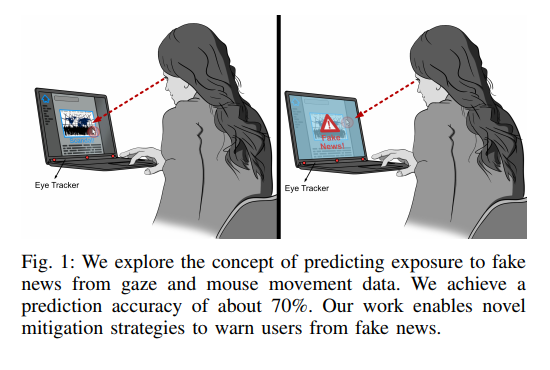
We propose an approach to identify users’ exposure to fake news from users’ gaze and mouse movement behavior. Our approach is meant as an enabler for interventions that make users aware of engaging with fake news while not being consciously aware of this. Our work is motivated by the rapid spread of fake news on the web (in particular, social media) and the difficulty and effort required to identify fake content, either technically or by means of a human fact checker. To this end, we set out with conducting a remote online study (N = 54) in which participants were exposed to real and fake social media posts while their mouse and gaze movements were recorded. We identify the most
predictive gaze and mouse movement features and show that fake news can be predicted with 68.4% accuracy from users’ gaze and mouse movement behavior. Our work is complemented by discussing the implications of using behavioral features for mitigating the spread of fake news on social media.
Gaze data estimation as performed using webcam data. We used the GazeCloudAPI.js tool10 to enable gaze estimation on our interface. Since we depend on webcams, data collection was conducted with a rate of 30 frames per second. We saved users’ raw gaze data (XY position) associated with the post ID they are scrolling over. For capturing the mouse movements, we used native HTML to save the mouse position whenever an event was fired. We saved mouse clicks, double clicks, hovers, and selections, as well as the ID of the post it is inside. Both mouse and gaze data were synced using timestamps.
https://www.unibw.de/usable-security-and-privacy/publikationen/pdf/abdrabou2023usec.pdf